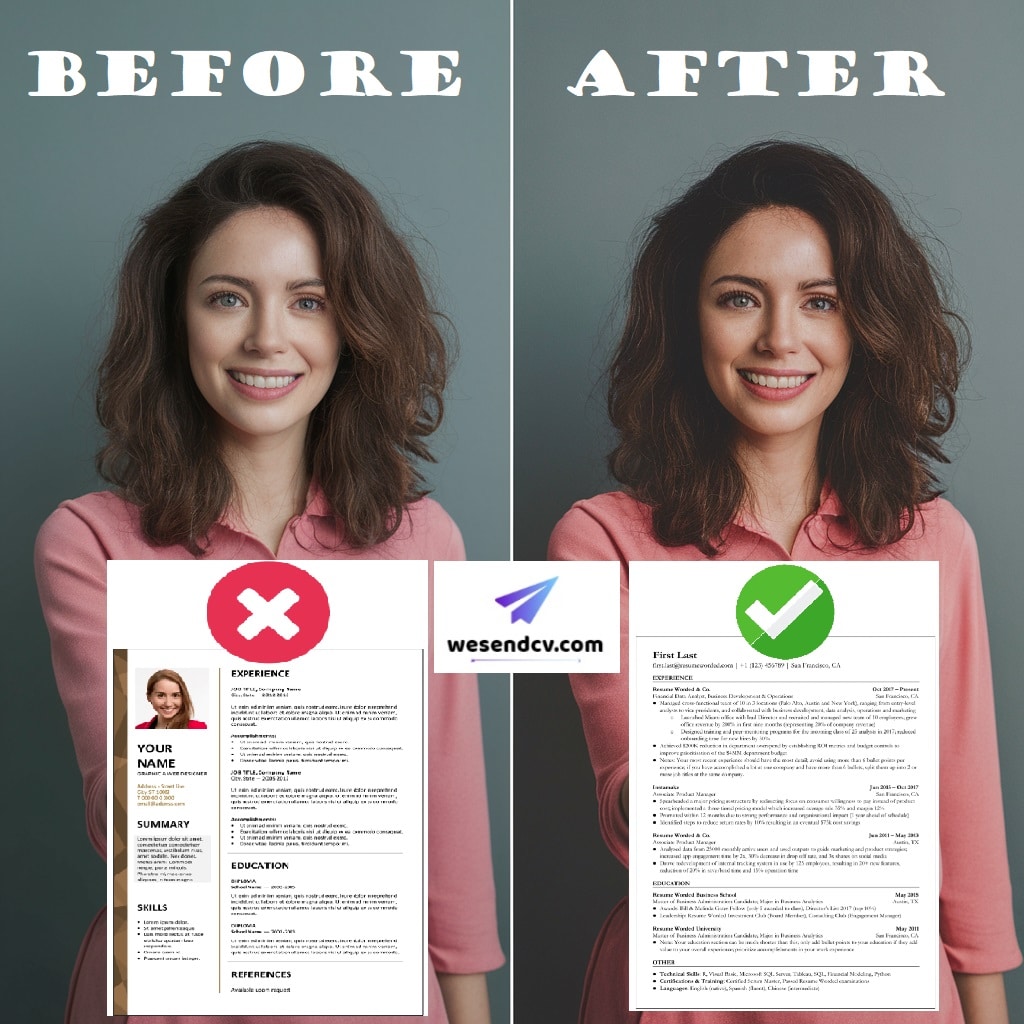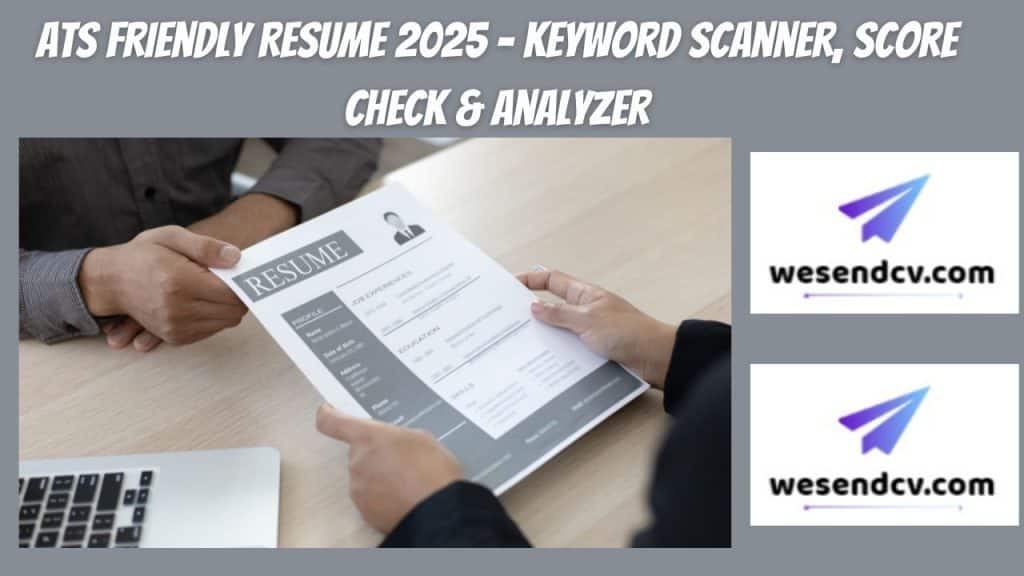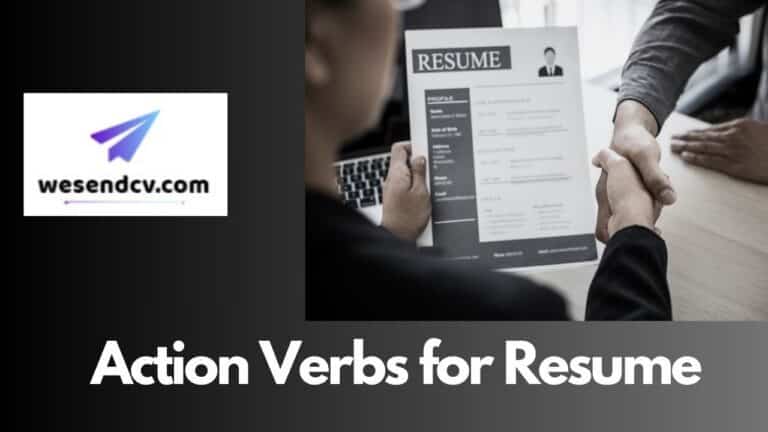In today’s digital job market, Applicant Tracking Systems (ATS) have become an integral part of the recruitment process. In fact, most companies—whether large or small—use ATS to filter job applications and identify the best candidates before a recruiter ever sees a resume. By 2025, these systems will be even more sophisticated, leveraging AI to automate screening, scoring, and shortlisting. Job seekers need to ensure their resumes are not only well-crafted but also ATS-friendly.
In this comprehensive guide, we’ll provide ATS-friendly resume tips to help you navigate these systems, optimize your resume, and increase your chances of landing an interview. We’ll also cover common pitfalls and tools you can use to analyze your resume’s ATS compatibility.
Main Highlights of Content
ToggleWhat Is an Applicant Tracking System (ATS)?
An Applicant Tracking System is software used by employers to manage and streamline the hiring process. It helps filter out unqualified applicants by scanning resumes for relevant keywords, job titles, skills, and qualifications. This automated process can save companies hours of manual labor by ensuring that only the most qualified candidates make it through to the interview stage.
By 2025, ATS platforms will continue to evolve, integrating artificial intelligence (AI) to better understand and match applicants’ qualifications with job requirements. However, this also means that resumes need to be crafted with both human and machine readability in mind.
Why ATS-Friendly Resumes Are Important
ATS software parses through hundreds or thousands of resumes for a single job posting. It helps employers identify suitable candidates quickly by matching their resumes against a predefined set of criteria like keywords, skills, education, and experience. If your resume isn’t optimized for ATS, it could be filtered out, even if you’re a strong candidate.
ATS-Compatible Formatting
Your resume must be formatted in a way that makes it easy for ATS to read and extract the necessary data. Fancy designs, non-standard fonts, tables, and images may confuse the software, leading to disqualification. A simple, clean format ensures the ATS can easily parse the information it needs.

ATS-Friendly Resume Tips to Pass Through Applicant Tracking Systems in 2025
Here’s how to ensure your resume gets past the ATS filter and into the hands of a hiring manager:
1. Use Standard Fonts and Simple Formatting
While creative fonts and intricate designs might make your resume stand out to a human eye, they often cause problems for ATS. Stick to standard fonts such as Arial, Calibri, or Times New Roman. Avoid complex layouts with columns, tables, or graphics, as these elements may be misread or overlooked by ATS.
- Tip: Use clear section headings like “Work Experience,” “Skills,” and “Education” to organize your resume. This helps both the ATS and recruiters navigate your document.
2. Optimize for Keywords
One of the most important factors in passing through ATS filters is using the right keywords. These keywords should reflect the job description, skills, qualifications, and industry terminology.
- Tip: Use tools like the Resume Keyword Scanner to identify the relevant keywords from the job description and ensure that you include them in your resume.
ATS will look for these keywords in your resume to determine if you are a good fit for the role. Ensure that the keywords are used naturally and in the appropriate sections, such as your skills or work experience.
3. Tailor Each Resume for Specific Job Applications
A one-size-fits-all approach no longer works. Tailor your resume to each job you apply for by matching your skills and qualifications with the job description. This is important for both ATS and human recruiters.
- Tip: Make use of the Resume Customization Tool to ensure that your resume aligns with each specific job role.
4. Avoid Images, Graphics, and Tables
ATS systems struggle to parse data embedded within images, graphics, and tables. Avoid using such elements, as they may cause vital information to be overlooked. Stick to text-based formatting that is clean and easy to read.
- Tip: Use bullet points to organize key information about your work experience and skills in a way that is both ATS-friendly and readable by human recruiters.
5. Use Standard Job Titles
When describing your past roles, use industry-standard job titles rather than creative or quirky alternatives. This ensures that ATS can recognize the titles and match them to the job requirements.
For example, if you were a “Digital Marketing Manager,” use that title instead of “Digital Wizard” or “Marketing Guru.” ATS will not match non-standard job titles with the keywords it is searching for.
6. Prioritize Relevant Experience and Skills
ATS prioritizes your resume based on how closely it matches the job description. Highlight the most relevant experiences and skills at the top of your resume, where they will be easily visible.
- Tip: Include both hard and soft skills that are mentioned in the job description. However, avoid keyword stuffing. Your resume should still flow naturally and be readable by a human recruiter.
7. Submit in ATS-Friendly Formats
While PDF files are sometimes acceptable, many ATS systems still prefer resumes submitted in Word format (.doc or .docx). This ensures that your resume is easily parsed without compatibility issues.
- Tip: Before submitting, run your resume through a Resume Analyzer to check if it’s ATS-compatible.
8. Check Your Resume with an ATS Tool
Before submitting your resume, use an ATS-friendly resume checker to ensure your document is optimized for parsing by tracking systems. Such tools can highlight areas for improvement, including missing keywords or formatting issues that could hinder ATS readability.
- Tip: Utilize tools like Resume Score Check to get a comprehensive analysis of your resume’s ATS compatibility.
9. Use Clear, Concise Language
ATS prefers resumes that are straightforward and easy to understand. Use clear, concise language to describe your achievements, responsibilities, and skills. Avoid excessive jargon or overly complex sentences that could confuse the system.
10. Leverage ATS-Friendly Sections
ATS systems tend to focus on specific sections of your resume. Make sure you have clearly defined sections such as:
- Contact Information
- Summary or Objective
- Work Experience
- Skills
- Education
Ensure these sections are labeled appropriately so that the ATS can easily categorize and extract information.

Common ATS Resume Mistakes to Avoid
Even if you follow the above tips, there are still a few pitfalls to avoid when crafting your resume for ATS:
1. Overstuffing Keywords
While it’s crucial to use the right keywords, stuffing too many keywords without context can lead to rejection. Your resume should read naturally. Avoid keyword stuffing or using irrelevant terms just to pass the ATS scan.
2. Overly Creative Formatting
Fancy designs or using templates with multiple columns can confuse ATS, which reads from left to right and top to bottom. Stick to a single-column format and simple layout.
3. Wrong File Format
Always check the job posting for preferred file formats. Some ATS systems struggle with PDFs, so submitting your resume in Word format is usually a safer choice unless otherwise specified.
4. Skipping Keywords from the Job Description
Some job seekers overlook the importance of using keywords directly from the job description. ATS software often ranks resumes based on keyword matching, so skipping this step could cost you an interview opportunity.
Tools to Optimize Your ATS Resume
Thankfully, job seekers in 2025 have access to several advanced tools that can help ensure your resume passes ATS checks. Some useful tools include:
1. Resume Keyword Scanner
This tool scans the job description and compares it with your resume to ensure the most relevant keywords are included. Using a Resume Keyword Scanner can help you identify critical terms that are missing from your resume.
2. Resume Score Check
Run your resume through the Resume Score Check to analyze its overall ATS compatibility. It checks for keyword density, formatting issues, and missing sections, giving you actionable feedback on how to improve your resume.
3. Resume Analyzer
The Resume Analyzer tool helps you identify whether your resume is properly optimized for ATS. It highlights areas where you can improve your resume’s readability for both ATS systems and human recruiters.
4. Resume Data Visualization
Sometimes, visual representation of your skills and achievements can set you apart from the crowd. Resume Data Visualization tools help create graphs and charts to represent key achievements, but remember to use these carefully to avoid confusing ATS.
Conclusion
Passing through Applicant Tracking Systems (ATS) in 2025 will require resumes that are both machine-readable and optimized for specific job roles. By following the above tips—such as using standard formatting, optimizing for keywords, avoiding fancy layouts, and tailoring your resume for each job—you can increase your chances of getting noticed by both ATS software and human recruiters.
Remember, crafting an ATS-friendly resume doesn’t have to be a daunting task. Use tools like the Resume Score Check and Resume Keyword Scanner to fine-tune your resume and ensure it’s optimized for success.







